Best Books on GraphQL Development to Buy in December 2025
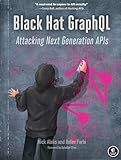
Black Hat GraphQL: Attacking Next Generation APIs



The Road to GraphQL: Your journey to master pragmatic GraphQL in JavaScript with React.js and Node.js



Learning GraphQL: Declarative Data Fetching for Modern Web Apps



GraphQL Best Practices: Gain hands-on experience with schema design, security, and error handling


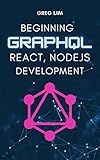
Beginning GraphQL with React, NodeJS and Apollo


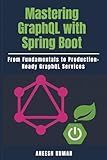
Mastering GraphQL with Spring Boot: From Fundamentals to Production-Ready GraphQL Services


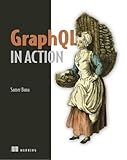
GraphQL in Action



Full Stack GraphQL Applications: With React, Node.js, and Neo4j


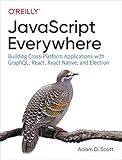
JavaScript Everywhere: Building Cross-Platform Applications with GraphQL, React, React Native, and Electron


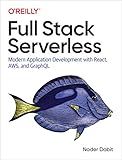
Full Stack Serverless: Modern Application Development with React, AWS, and GraphQL


To implement custom resolvers in GraphQL, you need to follow certain steps. Here are the steps involved:
- Define your schema: Begin by defining your GraphQL schema using the GraphQL Schema Definition Language (SDL). This includes specifying the types, queries, mutations, and subscriptions your API will support.
- Set up a resolver map: Create a resolver map object that associates each field in your schema with a resolver function. Resolvers are responsible for fetching the data for a field from the appropriate data source. The resolver map is usually an object where each key corresponds to a type or interface in your schema, and the value is another object mapping field names to resolver functions.
- Write resolver functions: Implement the resolver functions for each field in your schema. Resolver functions receive four arguments: parent, args, context, and info. The parent argument refers to the result of the previous resolver call in the GraphQL query. The args argument contains any input arguments passed to the field. The context argument holds contextual information shared across all resolvers, such as the currently logged-in user. The info argument provides information about the execution state of the GraphQL operation.
- Connect to data sources: Inside your resolver functions, connect to your data sources (e.g., databases, REST APIs, etc.) and retrieve the required data. You can use any programming language to interact with your data sources and fetch the data.
- Implement business logic: Apply any necessary business logic to transform and manipulate the fetched data based on your application's requirements. This can include filtering, sorting, grouping, or any other data processing operations.
- Return the resolved value: Once the resolver function has obtained the required data and applied any necessary transformations, it should return the resolved value. The resolved value should adhere to the type defined in your schema for the corresponding field.
- Repeat for related fields: If your schema includes nested or related fields, you may need to implement additional resolver functions to handle those relationships. These resolver functions can call other resolver functions or data sources to retrieve the required data for the related fields.
- Testing and debugging: Thoroughly test and debug your resolvers to ensure they work correctly. You can use tools like GraphQL Playground, GraphQL Voyager, or other GraphQL client libraries to execute queries and mutations against your API and verify the resolver behavior.
By following these steps, you can successfully implement custom resolvers in GraphQL and retrieve data from various sources to fulfill GraphQL queries and mutations.
How to implement batching and caching with resolvers in GraphQL?
To implement batching and caching with resolvers in GraphQL, you can follow these steps:
- Enable batching and caching in the GraphQL server: For Apollo Server, you can use the dataloader library to enable batching and caching. Install it using npm install dataloader. For other GraphQL server frameworks, you may need to use different libraries or implement batching and caching manually.
- Configure batching and caching in the resolver: Create a new instance of DataLoader in the resolver function. DataLoader is a wrapper around batch loading and caching logic. Define a batch loading function that retrieves data for multiple keys in a single call. This function should take an array of keys and return a Promise that resolves to an array of values. Use DataLoader's load or loadMany method to load data for one or multiple keys respectively, and return the result. Here's an example of how the resolver function might look like: const DataLoader = require('dataloader'); const batchLoadFunction = async (keys) => { // Perform batch data loading for `keys` and return the result // E.g., fetch data from a database or external API based on the keys }; const resolver = async (keys) => { const dataLoader = new DataLoader(batchLoadFunction); const results = await dataLoader.loadMany(keys); return results; };
- Use the resolver in GraphQL: In your schema definition, specify the resolver for a field that requires batching and caching. When the corresponding field is requested by a client, the resolver will batch and cache the data retrieval based on the keys provided by the client. For example, in a GraphQL schema: type Query { users(ids: [ID!]!): [User] } type User { id: ID! name: String! # other fields } The resolver for the users field can use batching and caching: const resolver = async (_, { ids }) => { // Implement batching and caching logic here }; When the client requests multiple users by their IDs, the resolver will batch the data retrieval and cache the results for efficient handling.
These steps provide an overview of how to implement batching and caching with resolvers in GraphQL. However, library-specific details and customization may vary based on the GraphQL server framework you are using.
How to implement caching for resolver functions in GraphQL?
To implement caching for resolver functions in GraphQL, you can follow these steps:
- Choose a caching mechanism: There are multiple caching mechanisms available, such as using a key-value store like Redis or Memcached, using an in-memory cache like Node.js Map or LRU-cache, or even using a CDN like Cloudflare. Decide which caching mechanism suits your application's requirements and choose accordingly.
- Determine cache keys: Identify the specific data or parameters that should be used as cache keys. For resolver functions, cache keys can typically be derived from the query/mutation arguments or any other relevant data that uniquely identifies the request.
- Check cache before executing resolvers: Before executing the resolver function, check if the data is already present in the cache using the cache key. If the data is found, you can directly return it from the cache, avoiding the resolver execution altogether.
- Execute resolver and update cache: If the data is not found in the cache, execute the resolver function to fetch the data from the data source. Once you have the result, update the cache with the fetched data using the cache key.
- Return data to the client: Whether you fetched the data from the cache or the resolver function, return the data to the client as the response.
- Cache invalidation: Determine how and when to invalidate the cache. Caching can lead to stale data if not handled correctly. You can consider implementing cache invalidation strategies based on time-to-live (TTL), event-driven invalidation, or manual invalidation depending on your application's requirements.
- Apply caching at different levels: You can apply caching at various levels in the GraphQL architecture, like caching at the network layer using CDN, caching at the GraphQL execution layer, or caching at the resolver function level. Depending on your needs, you can choose the appropriate level of caching.
Overall, caching in GraphQL resolver functions requires careful consideration of cache keys, cache checking, data fetching, cache updating, and cache invalidation strategies to ensure efficient data retrieval and reduced load on the data source.
What is the role of the parent value in resolver functions in GraphQL?
The parent value in resolver functions in GraphQL represents the result of the previous resolver in the field's query tree. It is commonly referred to as the "parent" because it corresponds to the object that contains the field being resolved.
The parent value is used to traverse the query tree and extract data from the parent object to resolve the current field. It allows resolvers to access the required data and manipulate it to produce the desired result for the field.
For example, if there is a query requesting a user's name and email, the parent value in the resolver function for the "name" field will provide access to the user object, allowing the resolver to retrieve and return the user's name.
Additionally, the parent value can be used to establish relationships between types in GraphQL. It enables the resolvers to navigate through object graphs and retrieve related data. For instance, retrieving a user's posts based on the user ID present in the parent object.
In summary, the parent value plays a crucial role in resolver functions as it provides access to the data in the parent object and facilitates the traversal of the query tree to resolve fields in GraphQL.
What are the best practices for debugging resolver functions in GraphQL?
Debugging resolver functions in GraphQL has some best practices that can help identify and resolve issues efficiently. Here are a few:
- Enable Debugging: Most GraphQL libraries and frameworks provide options to enable debug logs, which can be helpful in understanding the execution flow and identifying any potential errors or issues in resolver functions.
- Use Error Handling: Proper error handling is essential in resolver functions. Wrap the resolver code in try-catch blocks or use error handling middleware to catch and handle any exceptions or errors that may occur during execution.
- Logging: Add logging statements at relevant points in your resolver functions to trace and log important information. Logging can help track the flow of execution and provide useful details for troubleshooting.
- Console Output: Utilize console.log or console.dir statements to output the contents of variables, objects, or any desired information during execution. This can help inspect data and understand what is going wrong.
- Testing: Create test cases specifically targeting resolver functions to ensure they are functioning as expected. Automated tests can help catch issues early on and provide a controlled environment for debugging.
- Use Debugging Tools: GraphQL debugging tools like GraphQL Playground, GraphiQL, or Apollo DevTools can be handy to visualize and debug queries, track resolver invocations, and inspect request/response data.
- Query Validation: Validate your GraphQL queries against the schema using tools like GraphQL linting or schema validators. This can help identify any mismatched or missing resolver implementations.
- Apollo Server Tracing: If using Apollo Server, enable tracing to gather detailed performance metrics for each resolver function. This can aid in identifying slow or problematic resolvers.
- Break Down Complex Resolvers: If a resolver function becomes too large or complex, consider breaking it down into smaller, more manageable functions. This promotes code modularity and makes it easier to identify and debug issues in specific parts.
- Step-by-Step Execution: Temporarily modify resolver functions to execute step-by-step, console logging or using a debugger, to observe the intermediate values and pinpoint the cause of issues.
Remember, debugging resolver functions in GraphQL often requires a combination of techniques, including logging, testing, debugging tools, and code analysis.
